
views
- Locate your flight number on your ticket and/or boarding pass. It’s also printed on your booking confirmation paperwork.
- Flight numbers are made of a 2-digit airline code and a short string of numbers (up to 4 digits total).
- Use your flight number to track the status of a flight on the airline’s website or on a site like FlightAware.
Where to Find Your Flight Number

Find your flight number on your ticket, boarding pass, or confirmation paperwork. Your flight number starts with 2 letters (or 1 letter and 1 number) and ends with up to 4 numbers, which makes it easy to differentiate from any other numbers on your paperwork. Check your ticket, boarding pass, and/or confirmation paperwork to pinpoint this number. Flight number examples: AA2730, BA1594, B62498 Your flight number isn’t the same as a record locator, ticket number, or confirmation number. Pro tip: Your email is a great place to look for your flight number since your confirmation paperwork (and sometimes boarding pass) is emailed to you.
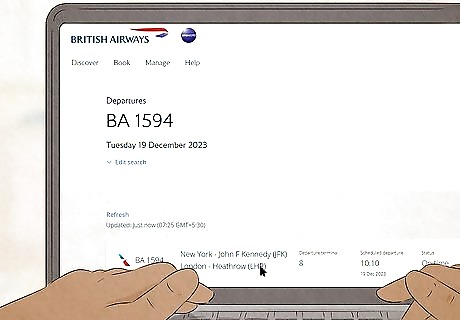
Check your flight number using the airline website. Head to the "Flight status" or "Check flight status" webpage of your designated airline and type in the requested information—this is typically the origin/destination airports along with the flight date. Scroll through the results to find the flight (and flight number) that lines up with your departure and arrival times. This option may only be available close to the day of your flight.
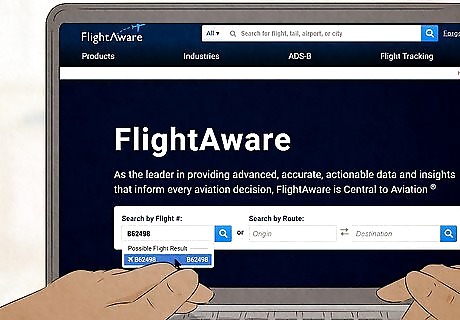
Search on a flight data website for a specific flight number. Visit a site like FlightAware and type in both the origin and destination airports of the flight. Scroll through the provided list of flights until you find the one that lines up with your flight time. The flight number is included on the listing. Like airline websites, flight data sites may only have data for recent/upcoming flights.
What is a flight number?
A flight number identifies a certain flight and its route in an airline network. Think of your flight number like a special barcode for your flight—it establishes which airline you’re flying with, as well as the exact route of your flight. All airlines have 2 things in common with their flight numbers: they all begin with a 2-digit airline code and are followed by code that’s up to 4 digits long.
Examples of Flight Numbers

AA2350The “AA” stands for American Airlines, the airline that’s operating this flight. Currently, the code “2350” refers to an outgoing flight from the Dallas-Forth Worth airport in Texas to the Mexico City airport in Mexico. Similarly, flight number AA2351 refers to the American Airlines flight traveling from Mexico City to Dallas-Forth Worth.

AS513The “AS” stands for Alaska Airlines, while the “513” code represents a flight traveling from an airport in Austin, Texas to an airport in San Francisco, California.

LH2271The “LH” stands for Lufthansa, while the “2271” code refers to a flight traveling from Nice, France to Munich, Germany.
What do I do with my flight number?
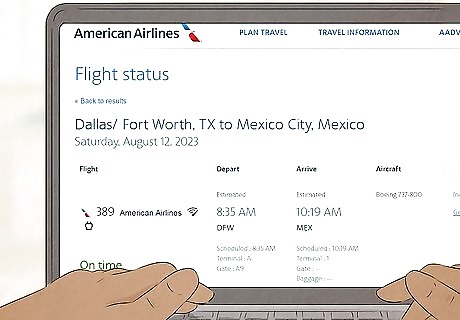
Use your flight number to check a flight’s status. Specific airline websites and general sites like FlightAware allow you to track a flight’s current status. With this feature, plug in your flight number to find out if your flight is on time or delayed. Or, use a friend or loved one’s flight number to track the progress of their flight as they travel. Note: You don’t necessarily need your flight number to check-in for a flight 24 hours before departure. For example, American Airlines requires your ticket number for check-in, which is on your confirmation receipt, corresponding credit card statement, or airport receipt.
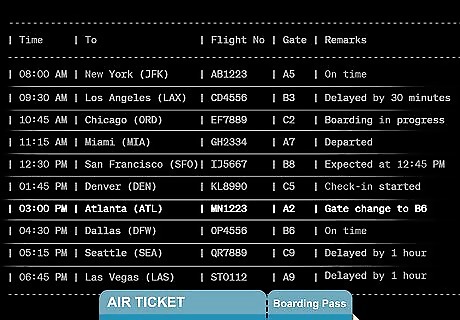
Check the departure monitor to confirm where your gate is. Your boarding pass typically has all of your gate info on it, so you don’t have to worry about checking the departure monitor (the display that has all of the outgoing airport flights listed on it). If you’d like to be extra certain, though, use your flight number to find your flight’s gate info on the monitor.
Advice for New Flyers

Go over your airline’s luggage requirements ahead of time. Airlines typically divide luggage into 3 categories: checked luggage, carry-on items, and personal items. Visit your airline’s website to see what the requirements are for your luggage’s dimensions (height/depth/width) and weight before you start packing so you don’t end up getting charged extra. Checked luggage typically includes larger suitcases (or other large items) that go in the plane’s cargo area, while carry-on and personal items can be carried onto the plane (with carry-on items often going in the overhead bins). Some airlines may waive certain luggage fees, while other airlines (like low-cost airlines) charge extra for most types of luggage you bring on the plane. Check your airline or government website (like TSA) to confirm what you can and can’t pack on an aircraft.

Put some toiletries and other essentials in your carry-on bag. It’s uncommon (but definitely not impossible) for luggage to get lost during a flight. To prepare for this worst-case scenario, make sure that all the items you really need are stored away in your carry-on, like your medications, glasses, toothbrush, and so on. Make sure that you pack your electronics in an accessible part of your luggage, since you may have to remove them from your bag when you reach security.

Wear comfortable clothes and shoes you can remove easily. Slip into a pair of shoes that are easy to get in and out of quickly—when you go through security, they’ll ask you to remove your shoes for the security scanner. It never hurts to wear clothes that are loose and comfy as you head to your terminal, especially if you’re gearing up for a long flight. Steer clear of open-toed shoes when you’re flying. Planes aren’t always the cleanest (especially the floors, carpets, and bathrooms), so you’re better off wearing close-toed shoes instead.
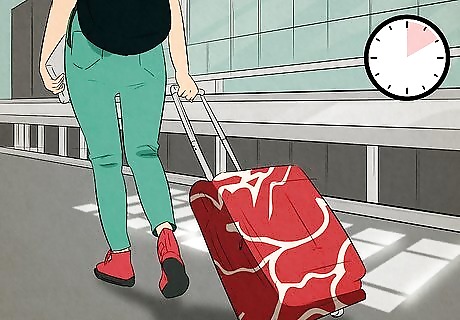
Head to the airport at least 2 hours before your flight takes off. Catching a flight isn’t as simple as strolling up your flight’s terminal. Instead, you need to check your luggage with your airline and head through the security checkpoints (which can be very busy, depending on the time you travel). Getting to the airport early ensures that you’ll have enough time to get yourself processed well before your flight takes off. Try arriving 3 hours early if you’re traveling internationally.

Keep your ID close as you walk through security. Have your airport’s required ID on hand when you go through the airport. Officials will ask to see your ID when you go through security, so it saves you and the security officials time when your ID is ready to go. You’ll need a passport if you’re catching an international flight.


















Comments
0 comment